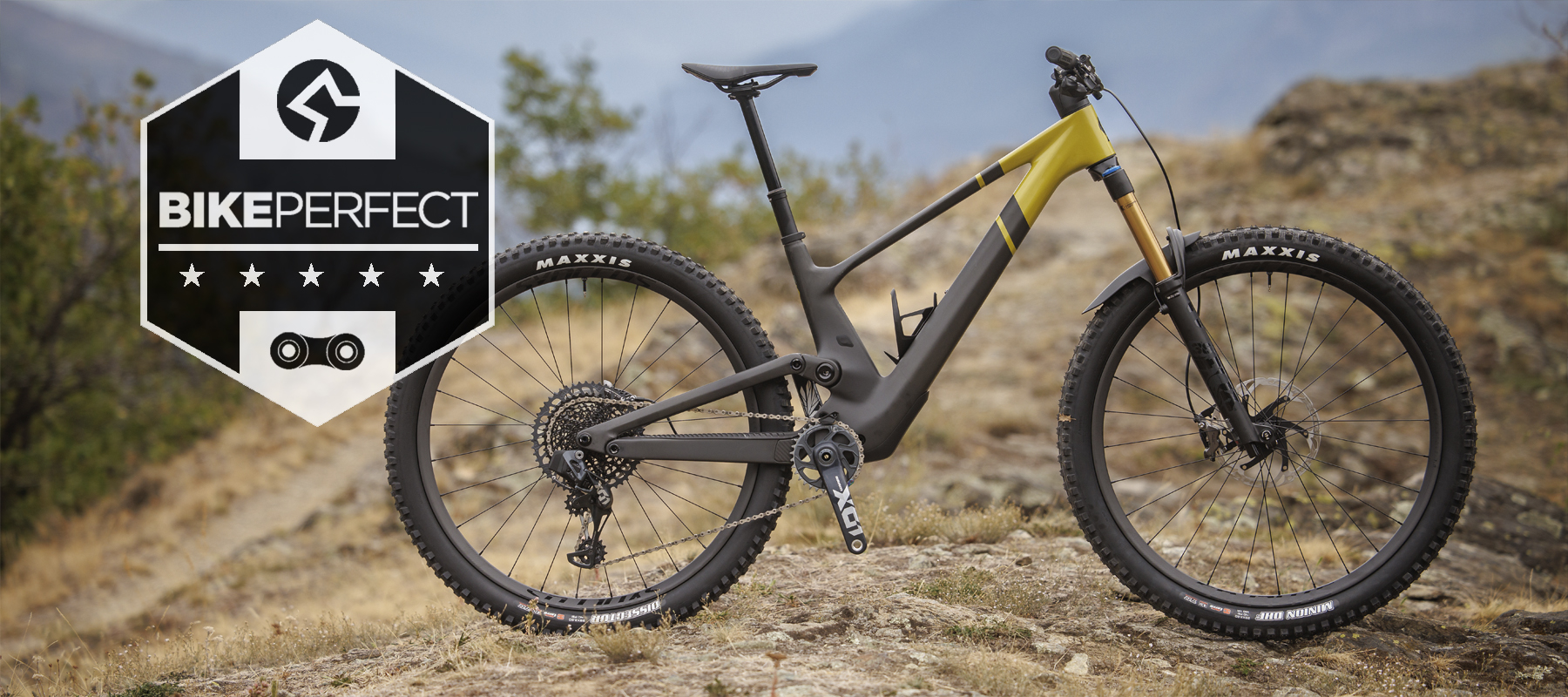Bike Perfect Verdict
The flagship Scott Genius ST 900 Tuned is a big investment but you do get a full carbon build, SRAM AXS shifting and Fox Factory level suspension. Fully enclosing the rear shock is genius but it also protects it from the elements, prolonging service life. With this build the ride quality is poised rather than plush but the bike looks truly stunning.
Pros
- +
Internal rear shock is protected from the elements
- +
New Fox Float X NUDE shock has three ride modes
- +
Frame has 0.6 degrees of built-in head angle adjustment
- +
Full bottle cage capability and dropper post adjustment
- +
Size specific dropper posts across all frame sizes
Cons
- -
Eye-watering price
- -
One piece bar/stem comes in limited rises and lengths
- -
Maybe too stiff
- -
Twin-lever remote takes up handlebar real estate
Why trust BikePerfect
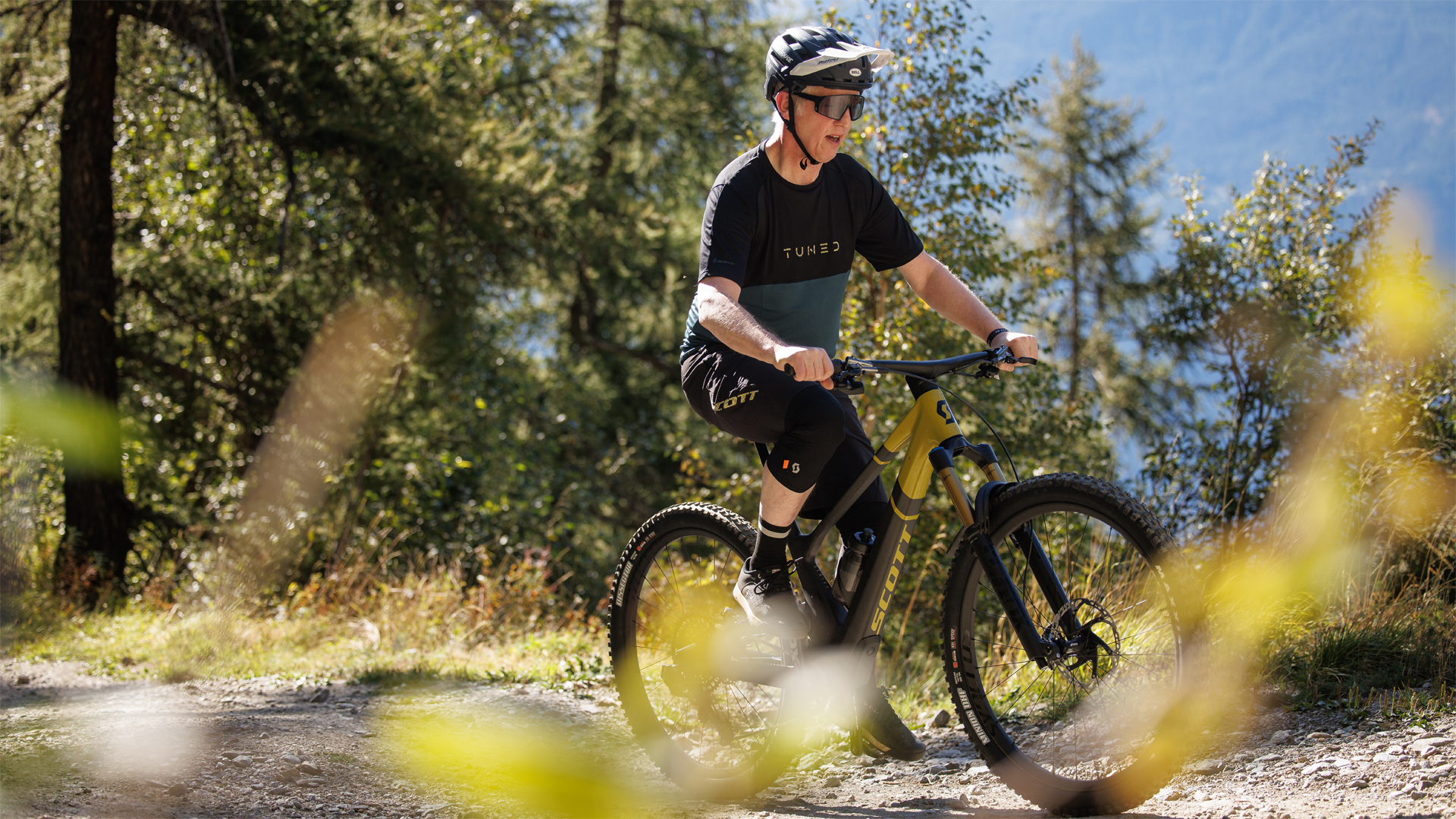
Back in 2019, Scott bought a majority stake in Bold Cycles (another Swiss bike company) for the simple reason that it had a unique frame design with an internal shock. Scott adapted this technology for the short-travel Spark but has spent the last year or so refining the design for a longer travel trail application.
The Scott Genius ST 900 Tuned features the Integrated Suspension Technology found on the shorter-travel Spark, resulting in a radical aesthetic. The new Fox Float-X NUDE rear shock is fully enclosed, but you can still easily access all the controls via the trap door and check sag via an external indicator. Scott has also tweaked the three ride modes, added on-trail head angle adjustment and full Syncros cable integration.
There are some obvious practical benefits to hiding the shock inside the Scott Genius ST 900 Tuned’s frame: the construction around the shock is stiffer, and larger bearings can be used in the seat tube pivot, which both reinforces the area and adds rigidity. It also lowers the center of gravity for increased stability and stable handling. Meanwhile, hiding the shock inside the frame means you’re not going to get dirt contaminating the seals, helping them to last longer. And from a purely aesthetic point of view, it makes the bike look incredibly clean – apart from a little loop of brake hose and remote cable at the handlebar, there’s nothing to spoil that sleek silhouette.
Design and geometry
The obvious question is how do you access the rear shock on the Scott Genius ST 900 Tuned if it’s hidden inside? To get to the shock adjusters and air valve, you press a little button on the aluminum cover and it pops open. Everything you need to adjust the suspension – the air valve, rebound and compression dials – are right there. You add air to the shock in the conventional manner but because you can’t see the O-ring, Scott has built an external sag indicator into the pivot just behind the seat tube. Running through the pivot is a forged 7075 aluminum splined axle that is almost like a BB spindle, and that allows Scott to run a bigger bearing, which again improves durability.
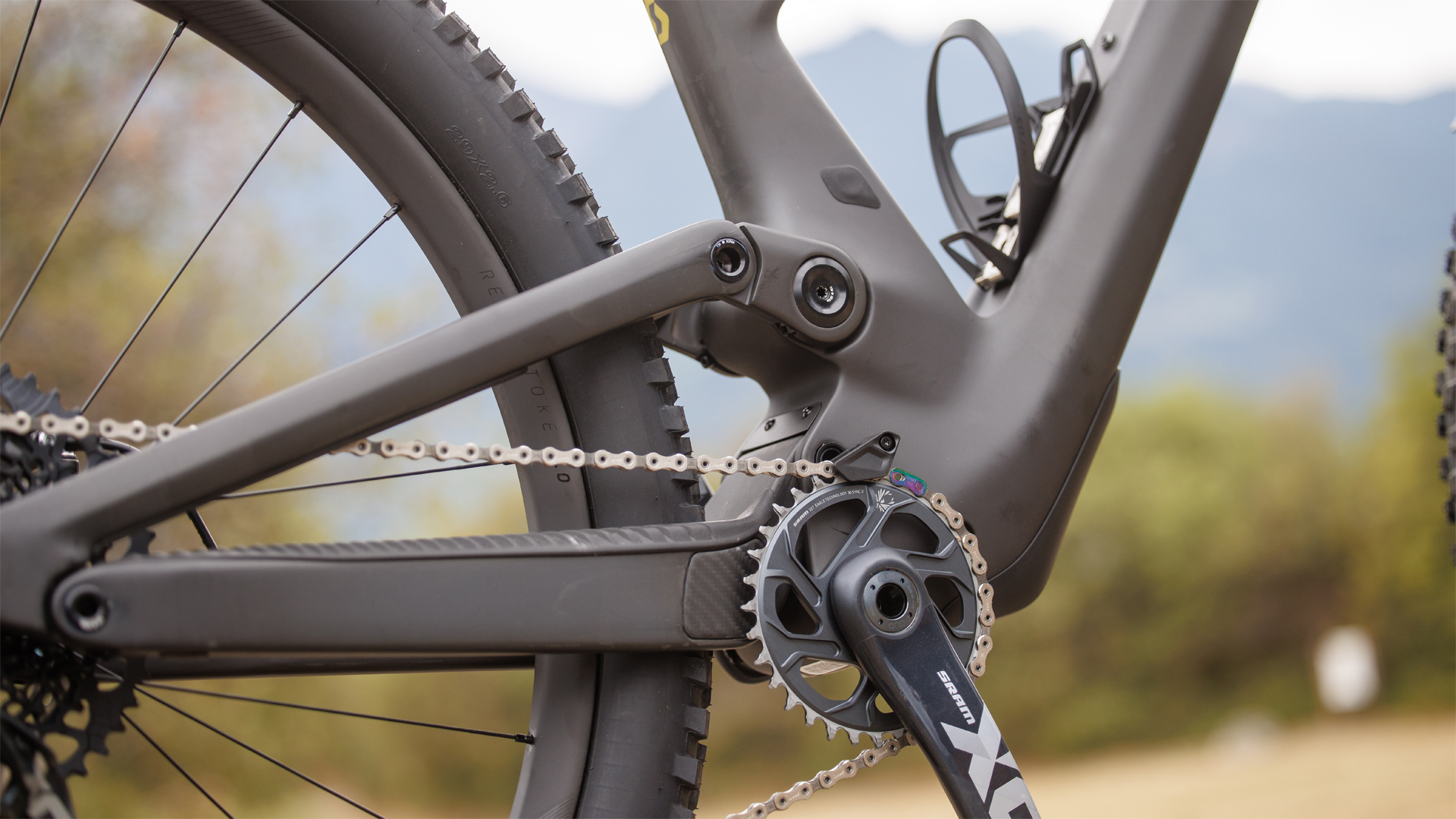
Scott did hint at running rear shocks completely without seals for improved suspension feel, but it's currently erring on the side of caution. That said, we suspect that may be a feature on the next bike to get an internal shock.
If you're worried about removing the shock for servicing, that’s easy too. The upper shock bolts are hidden under that rubber grommet on the seat tube, so it can be removed easily if, and when, it needs servicing.
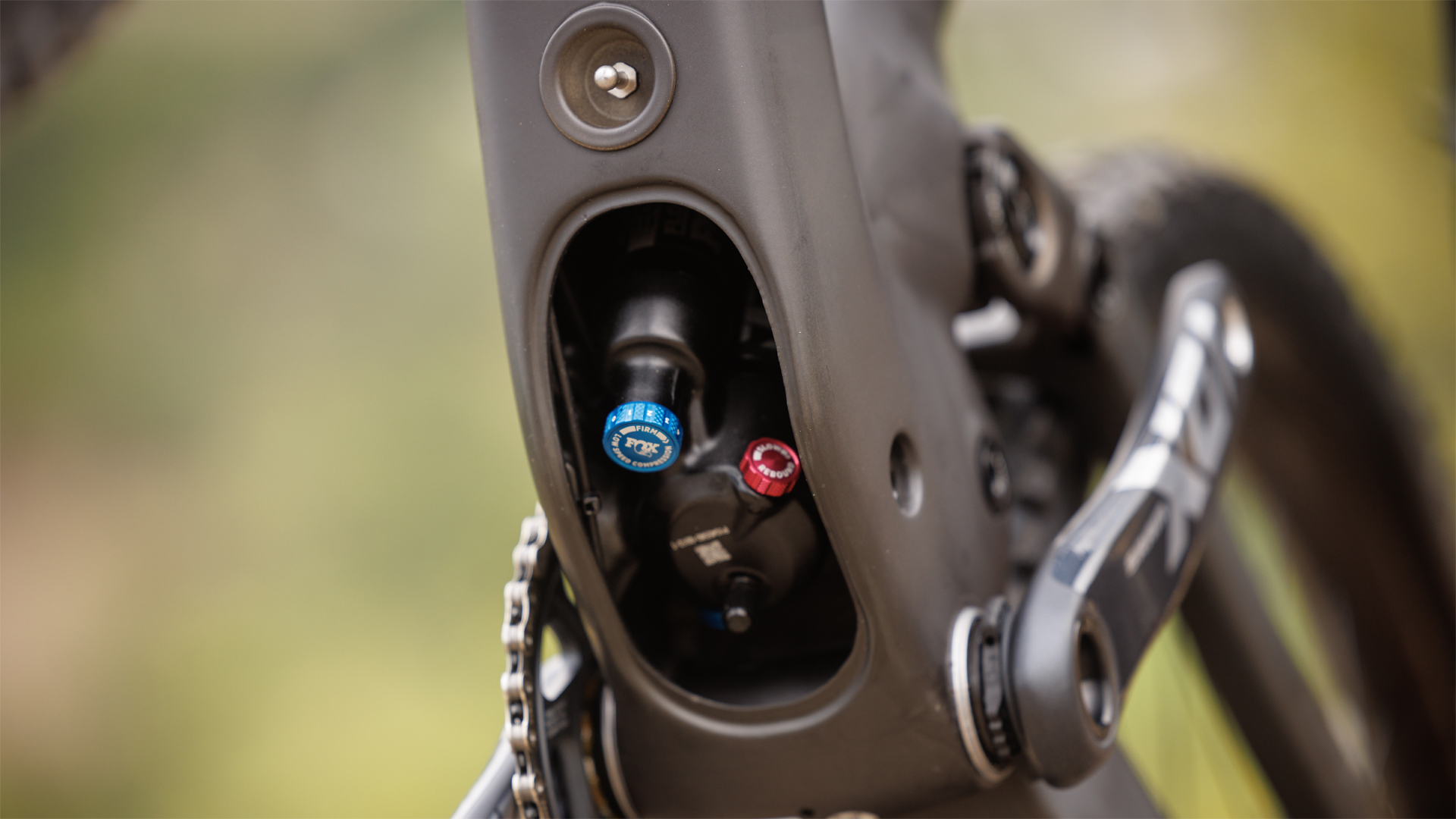
Like the previous Genius bikes, Scott is still offering two slightly different builds – regular and ST or Super Trail. Both bikes still come with a three-position TracLoc handlebar remote – the modes are Climb, Ramp Control and Descend, replacing the previous Lockout, Traction Control and Descend. But on the ST, the TracLoc lever now only closes off the rear shock, while the TwinLoc lever on the standard bike still locks out the fork. There’s also a slight difference to the modes – in the middle Ramp Control mode on the ST, one of the shocks air chambers is closed off, increasing progression. Scott claims this alters the dynamic geometry, so you sit higher in the travel, increasing pedal clearance and making the bike more responsive.
The lever is still a bulky unit to have under the bar but now there is no cable down to the fork and that big loop of cable spaghetti you used to get hanging out the front of the old bike is all hidden away. In fact, all the cables route internally using the Syncros Cable Integration System, which basically routes them into the front of the stem and then down into the frame.
Compared to the current Genius, Scott has refined the overall geometry. The head is around a degree slacker than the old bike, it’s dropped the BB height by over 5mm and added 20mm to the reach on each size.
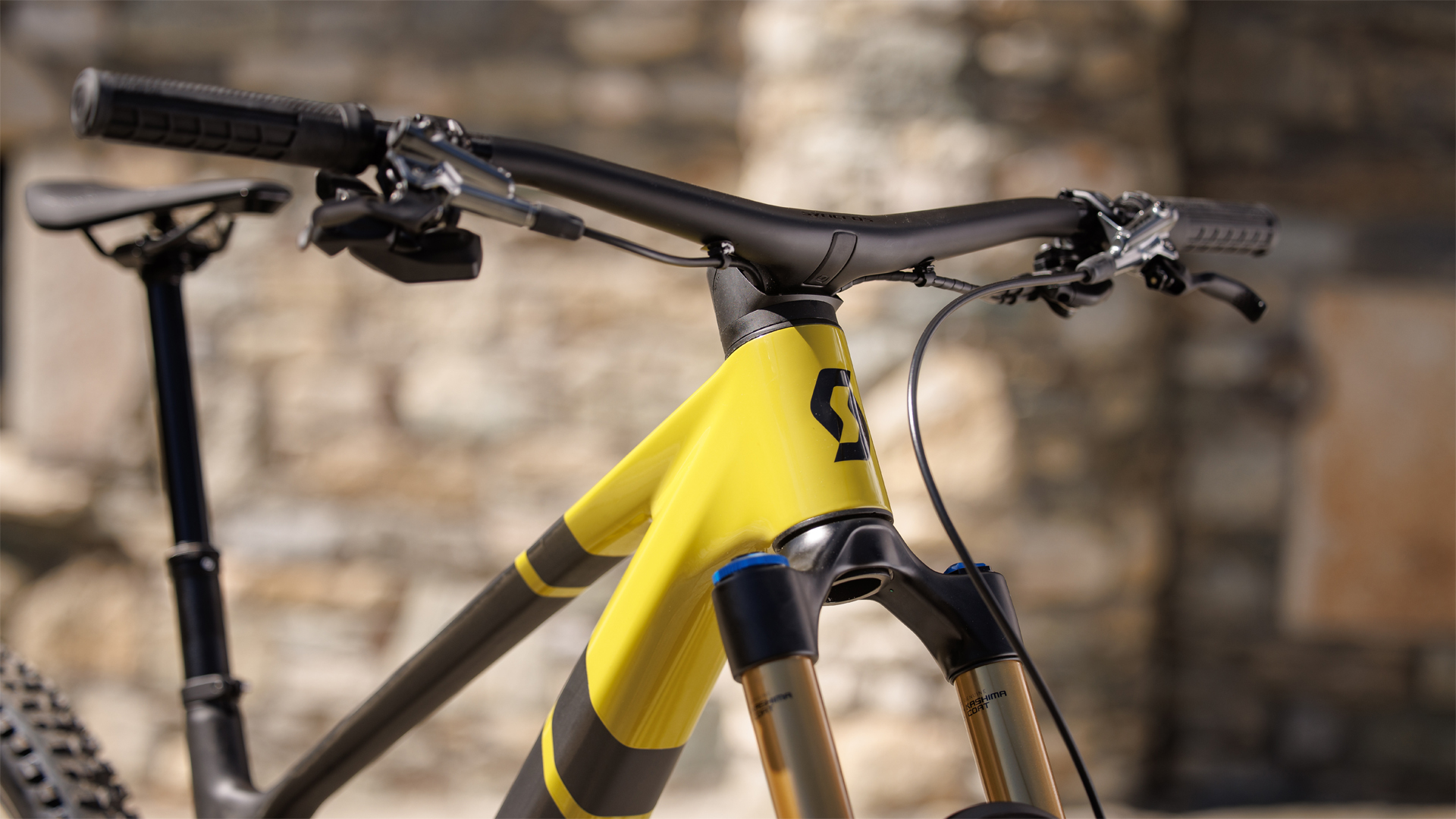
The Syncros Hixon carbon bar and stem are also fixed angle, and the bar part only comes in 780mm width. But Scott is offering it in either a 15 or 25mm rise and – while there’s also some height adjustment on the stem – you’ll have to run conventional headset spacers, which does spoil the overall aesthetic. There is a plastic cover over the top of the stem, which helps create a seamless transition with the headtube. If you remove this cover and spin the Acros headset cups round 180 degrees, you can adjust the head angle by over half a degree.
One thing that’s helped Scott eliminate excess cable is running a wireless SRAM AXS rear mech and shifter. The mech is mounted to a SRAM UDH hanger. I sort of expected an AXS dropper post too, but Scott is running a cable-operated Syncros Duncan dropper. And due to the lower shock position and steeper seat angle, you also get a full range of height adjustment.
It’s worth noting that Scott is fitting proportionally lengthened droppers for the different frame sizes – my large test bike had a 170mm but the small gets a 140mm, while the XL gets a 200mm.
Ride and performance
As well as making this Genius longer, lower and slacker, Scott has also steepened the seat angle, so the bike also climbs better. On the first big Alpine climb at the test launch I was sitting further forward and more upright, so pivoting round tight hairpins there was zero-wheel lift. With the fork open I was also getting a bit more traction on the rougher climbs.
There’s very little in the way of flex, so powering up a climb out of the saddle, the bike feels responsive, while when you’re sprinting out of a tight corner, all your energy is making it go forward.
When you drop TracLoc into the open setting, the whole bike physically lowers, meaning you can start ripping. With all the weight low slung, it feels really planted. However, the Scott Genius ST 900 Tuned didn’t feel as comfortable as I imagined for a 150mm trail bike and that’s because the Syncros Revelstoke carbon wheelset (with its 30mm rims) and the one-piece Hixon carbon handle and stem aren’t particularly resilient. There was a lot of cobbled singletrack and rocky Alpine meadow on our test loop, and I could feel a bit of harshness through the bar when hitting square edges at speed. I’m used to running a much wider and more flexible handlebar on my bikes and, to be fair, changing that and wheels is something you can do easily. Other models in the range, like the 910 and 920, also have aluminum rims as standard.
The Scott Genius ST 900 Tuned feels tight and efficient, even in the fully open mode. On tight singletrack it’s precise and agile, and it does have a real turn of speed when you step on the gas. On the faster open trails we were riding, the open setting was the order of the day, but I can see how the middle setting would really come into its own in tighter singletrack or while picking your way down a particularly rocky trail, where you don’t want to catch a pedal.
Verdict
The Scott Genius ST 900 Tuned is an amazing piece of engineering with a unique aesthetic. It’s far from a cheap bike by any measure but having the shock fully enclosed brings some real-world benefits in terms of durability. The attention to detail is also superb and the build is top drawer. A truly stunning bike.
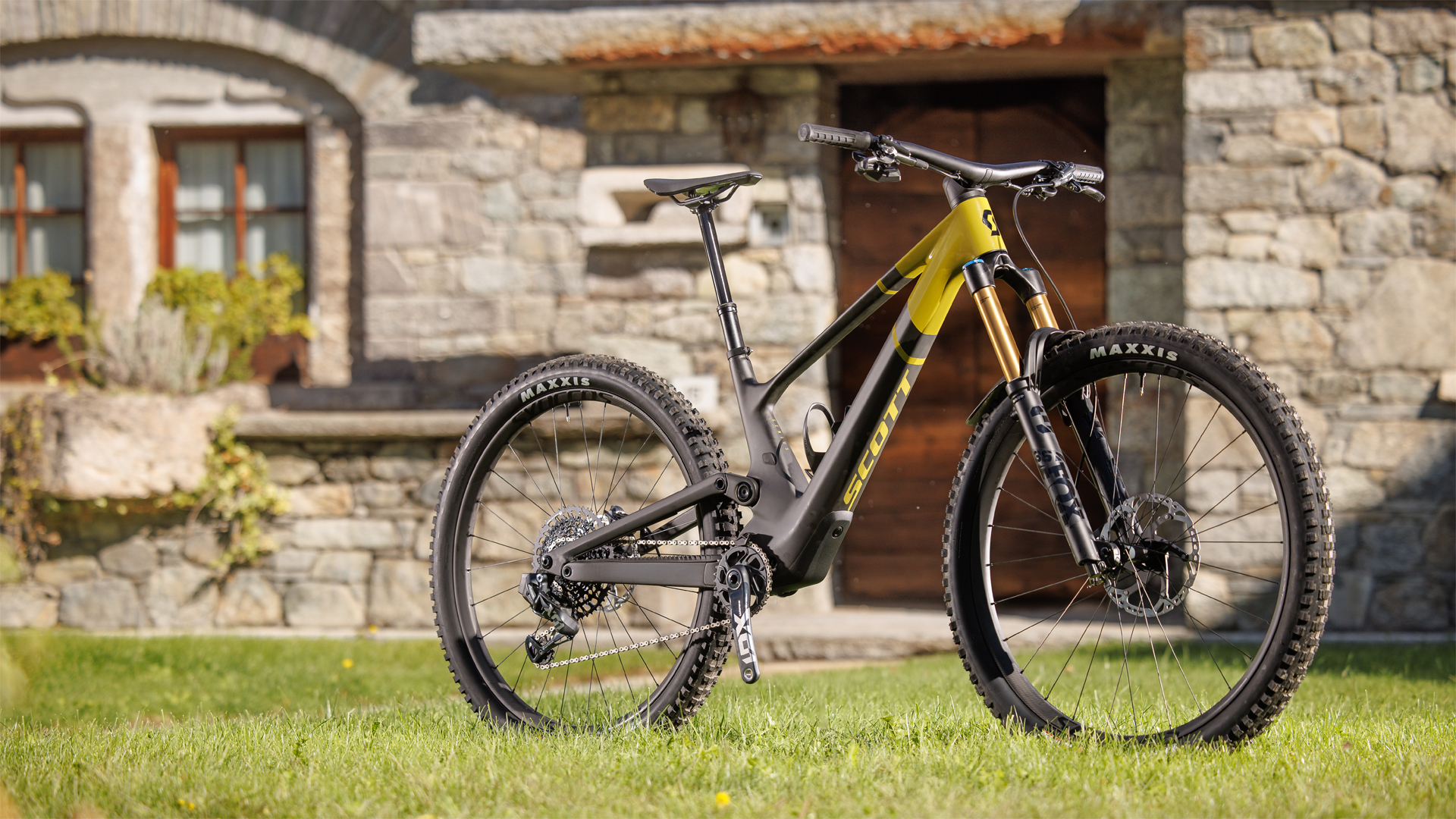
Tech specs: Scott Genius ST 900 Tuned
- Frame: HMX carbon (150mm travel)
- Fork: Fox 36 Float Factory Grip 2 (160mm travel)
- Shock: Fox Float X NUDE Factory
- Head tube angle: 63.9 degrees
- Seat angle: N/A
- Effective: 77.2 degrees
- Reach: 485mm
- Drivetrain: SRAM XO1 DUB Eagle carbon chainset 32t (170mm), SRAM XO1 Eagle AXS derailleur and SRAM GX Eagle AXS shifter
- Brakes: Shimano XTR M9210 4-piston (203/180mm)
- Wheels: Syncro Revelstoke 1.0 – 30 CL
- Tires: Maxxis Minion DHF (front), Maxxis Dissector Exo MaxxTerra (rear)
- Seatpost: Syncros Duncan Dropper post (170mm)
- Saddle: Syncros Tofino saddle
- Bars: Syncros Hixon iC carbon handlebar (780x45mm)
- Stem: Syncros Hixon iC carbon (45mm)
- Sizes: S, M, L, XL
- Weight: 13.3kg (29.2lbs) claimed size M
- Price: £10,999, US price TBC
- Rival products: Specialized S-Works Stumpjumper Evo, Fuel EX 9.9 XX1 AXS Gen 6

Paul has been testing mountain bikes and products for the best part of 30 years, he’s passed comment on thousands of components and bikes, from the very first 29ers and dropper posts to latest e-MTBs and electronic drivetrains. He first put pen to paper for Mountain Bike International magazine but then contributed to What Mountain Bike, Cycling Today and Cycling Weekly magazines before a 20 year stint at MBR magazine. An ex-elite level XC racer, he’s broken more bones than records but is now sustained on a diet of trail building, skills coaching and e-bike trail shredding.
